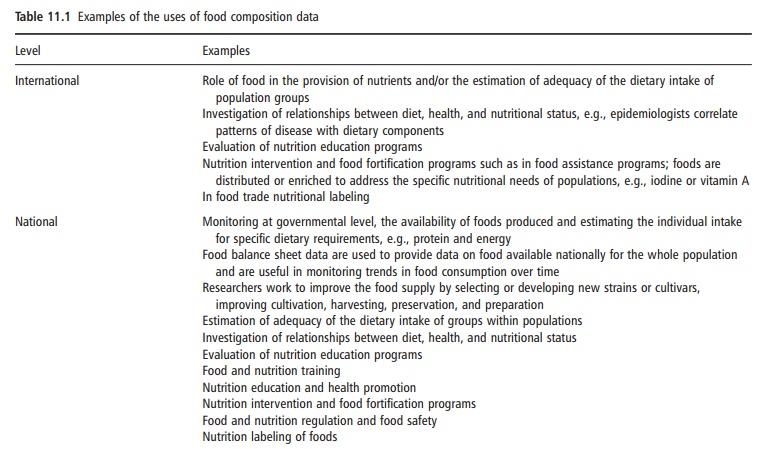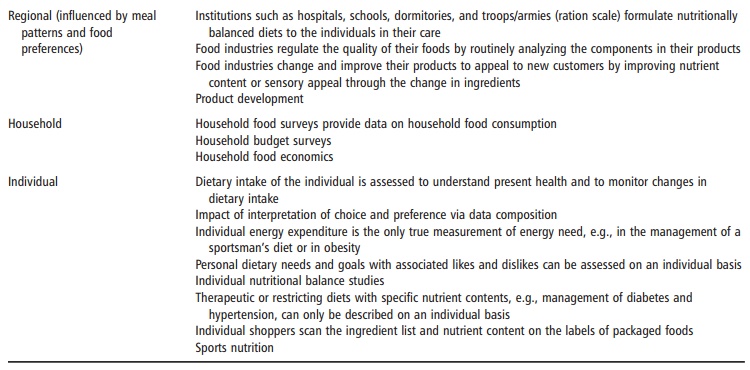Chapter: Introduction to Human Nutrition: Food Composition
Food Composition
Food Composition
Introduction
Although the amount, quality and availability of food composition
data vary among countries and regions, in general most developing countries
still do not have adequate and reliable data. This is despite the fact that the
components of specific foods have been published for over 150 years. Over time
food composition data have assumed more scientific, academic, and political
importance owing to their utility. Refer to Table 11.1 for practical examples
of the uses of food composi-tion data. It was only in 1961 that a regional food
composition table was developed and published for Latin America, followed by a
food composition table for Africa (1968), the Near East (1970), and Asia
(1972). The data in these tables were based on a very limited number of
samples, a limited number of nutrients and, in today’s terms, outdated analytical
methodologies. However, these tables are still being used today as there are
limited up-to-date tables avail-able. Worldwide there are currently over 150
food composition tables or nutrient databases, or their electronic/magnetic
equivalents, in use. Many tables are based on the data from the United States
Department of Agriculture’s (USDA) National Nutrient Database for Standard
Reference, SR, available on the Nutrient Data Laboratory’s web site:
www.ars.usda.gov/nutrientdata. A comprehensive list of the food composition
tables available can be obtained from the Food and Agriculture Organization of
the United Nations (FAO) homepage on the World Wide Web
(http://www.fao.org/infoods/directory). EuroFIR, the European Food Information
Resource Consortium, is a partnership between 40 universities, research
institutes, and small to-medium-sized enter-prises from 25 countries in Europe.
EuroFIR aims to develop and integrate a comprehensive cohort and validated
network of databanks of food composition


There is still a continued need to carry out food analyses as
the number of foods consumed all over the world, especially unique foods, is
still several times greater than the number for which analytical data exist.
The recent (2008) Cross Cutting Initiative on Biodiversity for Food and
Nutrition led by the FAO and Biodiversity International focused on genetic
diversity within species and of underutilized, unculti-vated, and indigenous
foods. The investigation has highlighted the need for composition data of
foods, not only at species level, but also at subspecies level. The limited
amount of composition data for under-utilized, uncultivated, and indigenous
foods playing important roles in the consumption patterns in under-developed
and developing countries increases this need for food composition analysis.
Food analyses are also needed under the following circumstances:
● when the data in existing tables are based on a single or very
limited number of samples
● when the content of a nutrient or other food com-ponent is not
available in an existing food table
● when there is no information available on which foods are
important sources of a nutrient or another food component of interest
● when there is no information on the loss or gain of nutrients in
foods during preparation by the methods being used by the population under
investigation
● when it is necessary to check the comparability of the various
food composition tables being used in a multicenter study
● when the method available to determine a particular nutrient is
considerably improved
● when scientific evidence is found correlating newly recognized
food components to health
● when new foods are produced or existing foods are reformulated.
Related Topics